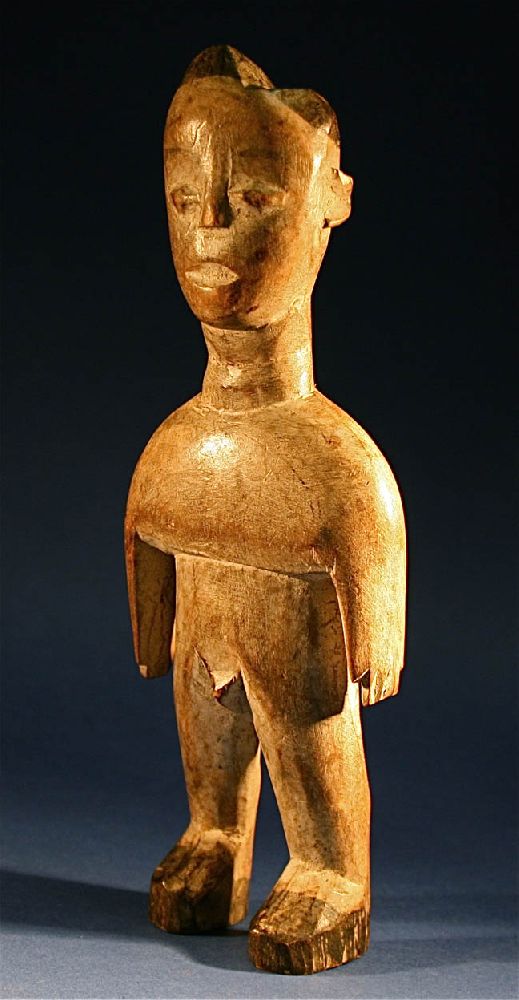

Title: Antique Hand Carved African Tribal Wooden Figure Art Doll
Shipping: $29.00
Artist: N/A
Period: 20th Century
History: N/A
Origin: N/A
Condition: Excellent
Item Date: 1940s to 1950s
Item ID: 4550
20th century African tribal Ewe Togo Art doll African tribe wooden carved figure Ewe Togo, These people are from Ghana. This is a carved wooden figures are found among all of the Ewe serving a number of different uses, such as fertility rituals. Typical for the art from the Ewe Togo people are the following: 1. serene style of the face, flat with slit eyes and a long, narrow nose 2. rings around the neck indicating health, well being and beauty 3. decoration with coloured beads. This particular figure wears very fine beads, even in several places. The wood has an attractive surface. The Ewe people/tribe come from Africa, Ghana, within the Ivory Coast.
Link: http://en.wikipedia.org/wiki/Ewe_people
The Ewe are a people located on the southeast corner of Ghana, east of the Volta River, in an area now described as the Volta Region. The Ewe are a people of southeastern Ghana, Togo and Benin. They speak the Ewe language, and are related to other speakers of Gbe languages such as the Fon and the Aja of Togo and Benin. They have come to their present territory from the east; their original homeland is traced to Oyo in western Nigeria. The Ewe are essentially a patrilineal people; the founder of a community was the established chief, and was then usually succeeded by his paternal relatives. The Ewe are thought to have migrated south from Nigeria to their present area around the 13th century. They are divided geographically between Ghana and its eastern neighbor, Togo. This area was colonized by the Germans and was originally called Togoland. After the German defeat in World War I, the Ewe homeland was split between France and England. Most Ewe can trace male ancestors to their original villages and make their territorial divisions along those lines. Extended families are the most important units of Ewe social life. Ewes have never supported a hierarchical concentration of power within a large state.